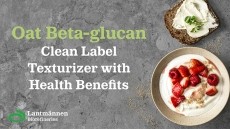Calorie labels are ‘wildly misleading’ claim experts

Failures to update calorie counting systems to take account of modern science could lead to errors of up to 30% in figures on labels and websites, according to the international group of nutritionists speaking at the American Association for the Advancement of Science (AAAS) annual meeting in Boston.
The group warned that the currently used system, which is based on the Atwater system, is seriously flawed and means that industry and government agencies are misleading consumers by allowing them to continue under-estimating their calorie consumption for decades after new information should have been included into calculations.
“We’re misleading consumers,” said Geoffrey Livesey, an independent nutritional biochemist who advises the UN Food and Agricultural Organization on standards for food labelling. “It’s promoting the wrong sorts of foods, which is not healthy.”
In addition to failing to account for the calorific value of other food groups such as fibre, the team of experts noted that government assessments and standards for energy in food assume that the calorific value of food is the same whether the food it cooked or raw.
However, Professor Wrangham of Harvard University, USA, said that scientists know that raw food provides fewer calories because the body expends energy breaking it down: “We are talking about at least a difference of between 10 and 30 percent.”
“There is a lot of misinformation around calories, and it is crucial for the consumer, whether they are on a diet or not, to have the correct information about what they eat,” said Wrangham.
“We’re still at the beginning of a line of research that may provide people with more solid recommendations,” added Rachel Carmody, also of Harvard.
Missing the fibre
“When people eat muesli, it is a healthy food but they are often putting on lots of weight,” said Livesey who noted that regulators have known since the early 1990s that fibre had a calorie content, but stuck with the old system for assessing calories which said fibre is indigestible and so had a negligible calorific contribution.
“So consumers have been eating more calories than they thought, particularly if the food was high-fibre,” he said.
The researchers said that an average bowl of bran cereal contains an extra 20 calories, while muesli has 12 more.
However the experts noted that European food labelling regulations are being changed, meaning that by the end of next year manufacturers will have to add two calories for each gram of fibre in a food item.
The Atwater way
The basis of the current system stems from the late 19th century, when Professor Wilbur Atwater, a laid down the foundations for food labelling in the United States.
At the time Atwater’s series of experiments were astonishingly accurate for the time, the experts noted – adding that Atwater established the relative caloric content of the major food macronutrients including carbohydrates, proteins and fats.
A modified version of Atwater’s original calculations are still the basis for determining the energy content of foods today , and also underlie the classic ‘food pyramid’ that recommends a diet that is relatively high in breads and cereals relative to proteins and fats.
However the Atwater method fails to account for calories from fibre and also fails to account for expended energy from chewing, according to the experts.
“The public is given erroneous information about the energy value of many foods,” said Wrangham. “We believe it is time for a high-level panel to consider how best to improve the quality of information provided about the real energy value of foods.”


























